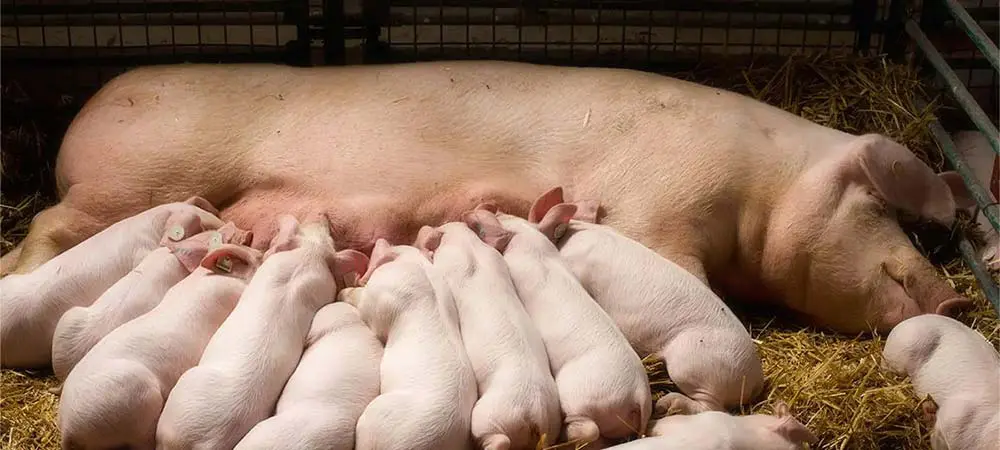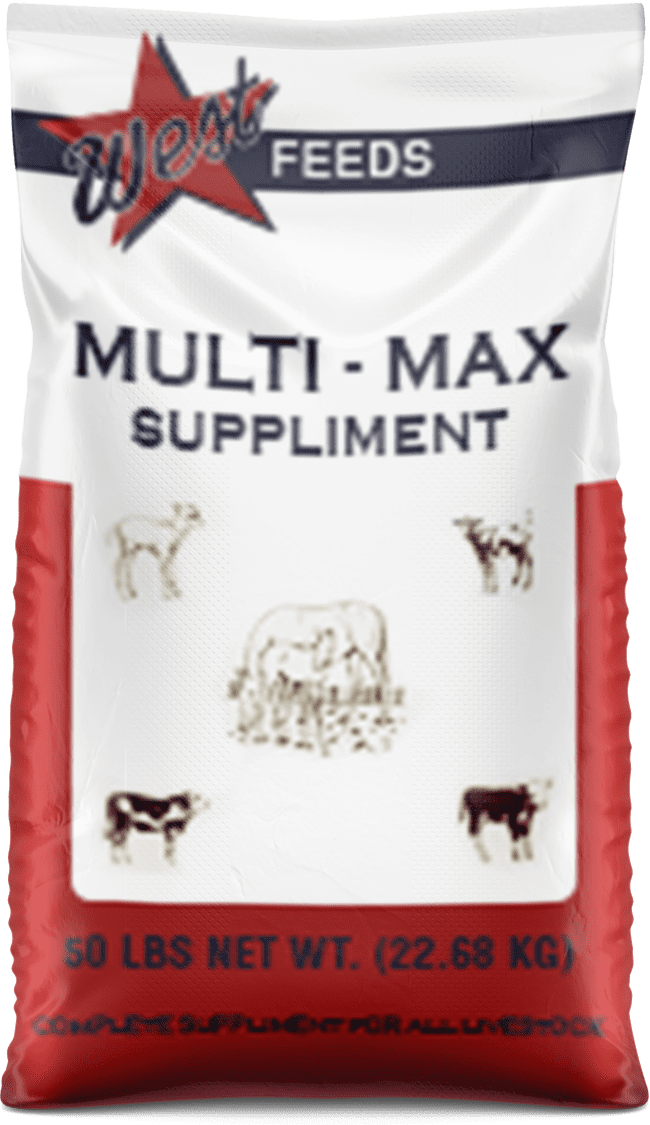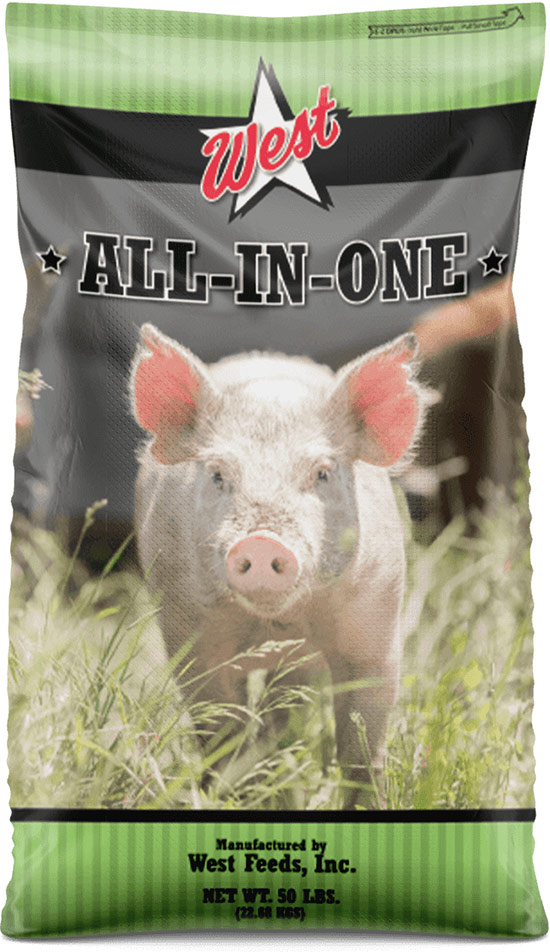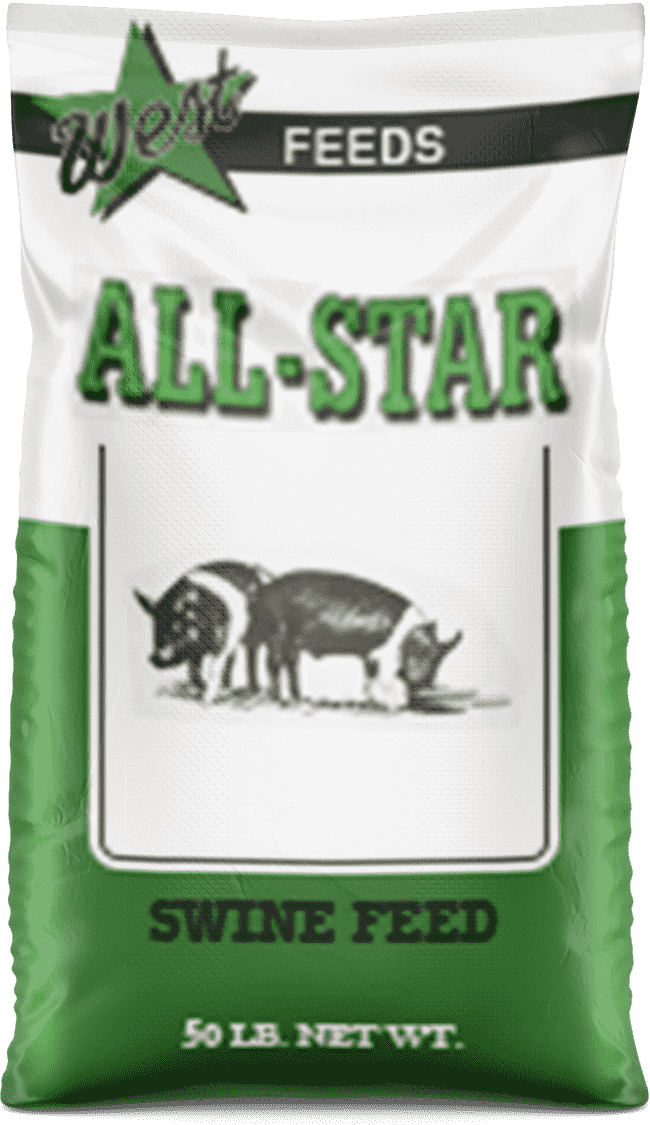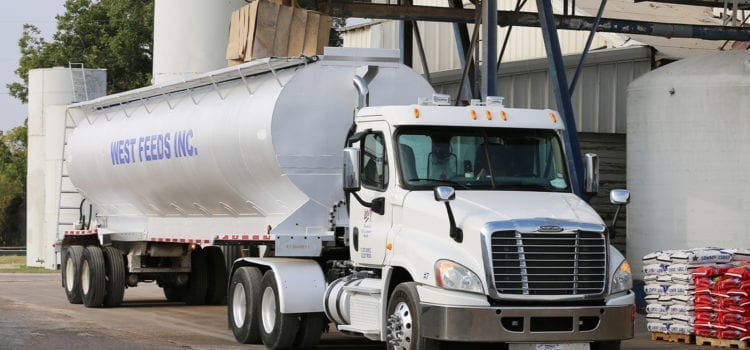If you’re looking to increase your swine’s profitability, there’s one major thing you need to focus on: high-quality pig feed that provides optimal nutrition.
Proper nutrition through feeding can help keep your pigs healthy, maximize growth and reproduction, and increase production. To know whether a feed is high-quality, though, you need to know a bit about the basics of pig nutrition.
That’s why we’ve put together this simple but comprehensive guide.
Read on to learn more about the essentials of swine nutrition and how best to increase farm efficiency through quality pig feeds that can support your pigs’ well-being and development.
First, What Nutrients Do Pigs Need?
Pigs require appropriate servings of six nutrients: water, protein, fats, carbohydrates, vitamins, and minerals.
What does “appropriate serving” mean in reality, though? Well, the exact answer depends on the animal’s age. For instance, growing pigs typically require a lot of protein.
Female pigs who are gestating or lactating also have special nutritional requirements (see “Nutritional Needs for Breeding Pigs,” below).
Now let’s take a look at each of these six nutrients.
Water
Water is the most important nutrient for all living things, pigs included. As such, it’s important to offer free-choice water so animals can drink as much as they need.
Growing pigs need around 2–3 gallons per day, while finishing pigs require about 3–5 gallons. Keep these numbers in mind when determining how much water you need to put out each day.
Protein
Protein builds up muscle, helps fetuses grow, and maintains overall optimal health.
For a pig’s body to create protein, it requires chemicals known as amino acids. There are ten essential amino acids—“essential” means they aren’t produced in the body and must be obtained from food. Therefore, make sure the feed you’re administering contains them.
Crude protein is especially important for grower-finisher pigs and lactating pigs.
Fats and Carbohydrates
Fats and carbohydrates are a “dynamic duo” which will provide your pigs with energy.
Pigs are “monogastric” creatures—this simply means that their stomach has one chamber, instead of four like a cow. Monogastric animals tend to have higher energy requirements than those with more complex stomachs.
Grains like wheat, barley, and oats are a good source of both fat and carbs for your pigs. Many pig feeds are composed primarily of these ingredients.
Vitamins
Vitamins A, E, D, B12, and a few others help pigs’ bodies function properly. Leafy plants and alfalfa are some of the best sources of the vitamins pigs need.
If your pigs don’t have access to vitamin-filled pasture, you’ll need to pay extra attention to the feed you use to ensure it includes the required vitamins.
Minerals
Calcium and phosphorus are the two most important minerals for pigs. They help maintain the skeletal system and aid in blood clotting. Salt is also essential, and copper, iron, zinc, and manganese are required in small amounts, too.
How do you ensure your swine gets these minerals? Certain pig feeds may contain these minerals in trace amounts, but you can also purchase mineral supplements for your herd.
Pig Feeding Tips Based on Life Cycle
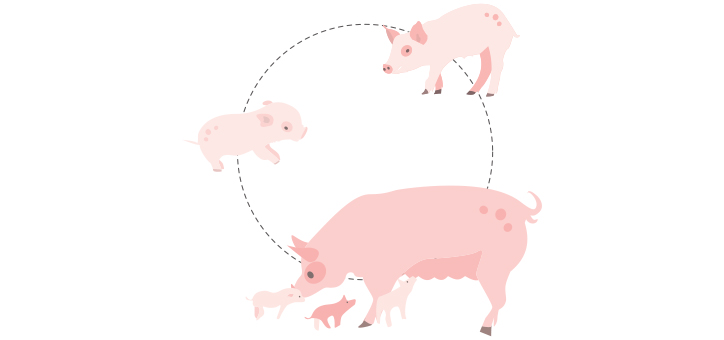
Piglets—placing some feed out for nursing pigs to get them used to solids, known as creep feeding, is a good idea for piglets. The pig feed should have at least 16% crude protein. Piglets also may need iron, so be sure to supplement unless they are raised outdoors and you have some good quality soil.
Grower-finisher pigs are pigs between weaning age and market weight (about 220 pounds). The amount of crude protein these swine require decreases the bigger they get. So, for example, a pig weighing 45 pounds might require 16% crude protein, where a 150-pound one would need feed with a lower percentage of protein.
Breeding pigs have some very unique needs, so continue reading to learn more about this stage of a pig’s life cycle.
Nutritional Needs of Breeding Pigs
The nutritional cycle for breeding pigs usually goes something like this: flush until bred, reduce intake until birthing, then tweak nutrients while lactating.
Flush the Herd!
What’s the first step to increasing the profitability of your swine herd? The answer—besides understanding pig nutrition—is to have as many pigs as possible!
This is the goal behind flushing—which means feeding your pigs more per day in the days leading up to breeding. When you “flush the herd,” there’s a good chance each gilt or sow will produce more ovulated eggs and so more offspring. A good amount of feed for pigs, up until they breed, is around 6 pounds per day.
After Breeding, Roll Things Back
Once the pigs have bred, it’s vital to start limit-feeding them. Too much feed can actually kill developing embryos. A good rule of thumb is around 4–6 pounds of feed per day for each pregnant sow.
During Lactation, Adjust Diet
Lactation is demanding on the body, so milking sows require a lot of crude protein to keep things going. A feed with 15%–16% crude protein should be administered to lactating sows.
Lactation also increases sows’ water needs—they may require as much as 7 gallons per day! Put out copious amounts of water for every lactating sow to ensure they can successfully feed their young.
Conclusion
Knowing about pig nutrition is important because applying this knowledge increases the feed efficiency of your herd. In other words, when you choose the right pig feed, you ensure you’re getting the most bang for your buck. The right feed encourages proper development, good health, and a greater financial return on investment. When you’re operating a pig operation, this is what it’s all about!

